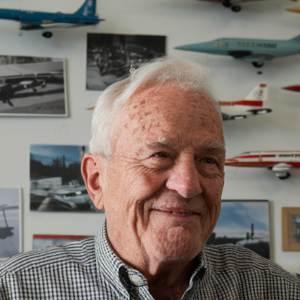Discover the remarkable story behind O’Hare International Airport, named after one of World War II’s most distinguished naval aviators. This fascinating tale of heroism and sacrifice reveals how a single pilot’s extraordinary actions continue to be remembered by millions of travelers every day.
Airports worldwide serve as living memorials to individuals who have made extraordinary contributions to aviation and their nations. Among these, O’Hare International Airport stands out as a tribute to Lieutenant Commander Edward “Butch” O’Hare, a naval aviator and Medal of Honor recipient. Another notable example was the former Eddie Rickenbacker Airport (now John Glenn Columbus International Airport), named after America’s leading World War I ace.
Significance of Naming Airports After Pilots
When an airport bears a pilot’s name, it elevates their legacy from historical footnote to daily public consciousness. This practice serves multiple purposes:
- Honors exceptional military service
- Preserves important historical narratives
- Inspires future generations of aviators
- Creates educational opportunities for travelers
- Reinforces national values of courage and sacrifice
The Story of the Pilot Behind the Airport Name
Lieutenant Commander Edward Henry “Butch” O’Hare’s story represents the sacrifices made by an entire generation of military aviators during World War II. His relatively brief but impactful career became a symbol of American courage during one of history’s most pivotal conflicts.
Biography of the Pilot
| Detail | Information |
|---|---|
| Birth Date | March 13, 1914 |
| Birthplace | St. Louis, Missouri |
| Education | United States Naval Academy (1937) |
| Training | Naval Air Station Pensacola |
| Marriage | Rita Wooster (1941) |
Pilot’s Achievements During World War II
- First Navy fighter ace of World War II
- Shot down five Japanese bombers in four minutes
- Saved USS Lexington and hundreds of American lives
- Received Medal of Honor from President Franklin D. Roosevelt
- Pioneered night fighting techniques for carrier-based aircraft
- Commanded the Navy’s first night fighter squadron
The Airport Named After the World War II Pilot
O’Hare International Airport, one of the world’s busiest aviation hubs, serves as a permanent tribute to Lieutenant Commander O’Hare’s heroism. Located in Chicago, Illinois, this massive transportation center connects millions of travelers while preserving the memory of a remarkable World War II pilot who made the ultimate sacrifice for his country. His legacy lives on through every passenger who passes through the terminals that bear his name.
History and Background of the Airport
Originally established as Orchard Field Airport (explaining the current ORD code), the facility was renamed O’Hare Field in 1949, six years after Lieutenant Commander O’Hare’s heroic death in combat. The official dedication ceremony took place on March 19, 1949, with O’Hare’s widow Rita present to honor her late husband’s legacy.
- Started as a Douglas C-54 military transport aircraft manufacturing plant during World War II
- Transitioned to civilian use after the war
- Began commercial passenger flights in 1955
- Achieved status as world’s busiest airport by 1962
- Maintained this distinction for several decades
Current Role and Importance of the Airport
| Feature | Description |
|---|---|
| Annual Passengers | Over 80 million (pre-pandemic) |
| Global Reach | 200+ destinations across 6 continents |
| Airline Operations | United Airlines’ largest hub, American Airlines’ second-largest hub |
The airport features a meaningful tribute to its namesake in Terminal 2, where visitors can view a replica of Butch O’Hare’s F4F Wildcat alongside an extensive exhibition detailing his life and heroic actions. This display transforms routine travel time into an opportunity for historical education and reflection on American heroism.
Legacy of the Pilot and the Airport
O’Hare International Airport stands as more than just a transportation hub – it’s a living memorial to one of America’s first World War II heroes. The decision to rename Orchard Field to O’Hare International Airport in 1949 ensured that Lieutenant Commander Edward “Butch” O’Hare’s extraordinary courage during the Pacific War would be remembered by generations to come.
Impact on Aviation and Local Community
- Generates over $40 billion in annual economic activity
- Supports approximately 450,000 regional jobs
- Catalyzes development across Chicago’s northwest side
- Inspires aviation education programs in local schools
- Influences infrastructure decisions through O’Hare Modernization Program
The airport’s designation has created a powerful connection between Chicago and values of courage, service, and excellence, shaping the city’s identity as a center of aviation advancement and military service recognition. Despite O’Hare being from St. Louis, his legacy has become intrinsically linked with Chicago’s global standing and economic development.
Commemorations and Memorials
The centerpiece of O’Hare’s commemoration is the meticulously restored F4F-3 Wildcat display in Terminal 2. This authentic aircraft, showcasing VF-3 squadron markings, hangs suspended above travelers alongside an interactive exhibit detailing his life and heroic actions.
- Medal of Honor citation display
- Personal photograph collection
- Interactive World War II naval aviation exhibits
- Bronze statue by Edmonia Lewis depicting O’Hare in flight gear
- Educational touchscreen displays for visitors
| Memorial Type | Description |
|---|---|
| USS O’Hare (DD-889) | Gearing-class destroyer serving from 1945 to 1973 |
| Annual Ceremonies | Birthday and final mission commemorations with naval representatives |
| Technical Center | Edward H. O’Hare facility at Naval Air Station North Island, California |
| Educational Legacy | Chicago area schools named in his honor |
These diverse commemorations ensure that O’Hare’s legacy remains vibrant in America’s collective memory, transforming him from a historical figure into an enduring symbol of heroism and sacrifice. Through these memorials, his story continues to inspire new generations of aviators and civilians alike.


Leave a Reply